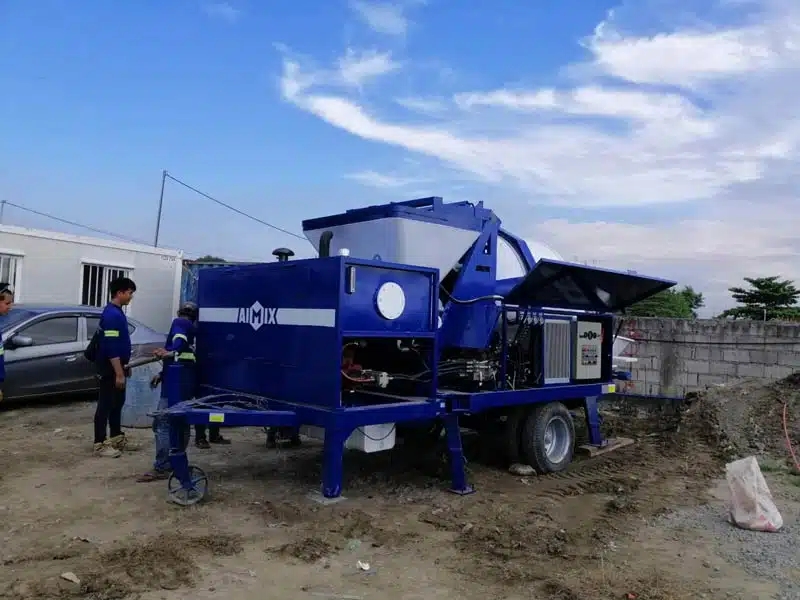Concrete pumps play a pivotal role in modern construction, facilitating efficient delivery of concrete to various project sites. The cost of these pumps can vary significantly, influenced by several critical factors. Understanding these components and their impact on pricing is essential for making informed investment decisions in construction equipment.
Concrete pumps are sophisticated machines comprising intricate components that collectively determine their functionality and cost. The main pump unit and boom system are integral to their operation, each contributing uniquely to overall performance and pricing.
Key Components of Concrete Pumps
Main Pump Unit
The main pump unit is the heart of a concrete pump, responsible for pressurizing and pushing the concrete mixture through the delivery pipeline. It consists of components such as the hydraulic system, piston assembly, and hopper. High-capacity concrete pumps for sale designed for larger construction projects command higher prices due to their robust build and enhanced pumping capabilities.
Boom System
The boom system enables precise placement of concrete, extending horizontally and vertically to reach different areas of a construction site. It comprises boom sections, articulating joints, and the end hose, which dictate the pump’s flexibility and reach. Advanced boom systems with extended reach and multiple articulation points are more expensive but offer unparalleled maneuverability and coverage.

Factors Influencing Concrete Pump Costs
Several factors contribute to the varying costs of concrete pumps, reflecting their design, capabilities, and technological features tailored to specific project requirements.
Equipment Size and Capacity
The size and pumping capacity of a concrete pump directly impact its cost. Larger pumps capable of handling higher volumes of concrete or reaching greater distances command premium prices. Factors such as pumping distance, output rate in cubic meters per hour (m³/h), and pressure ratings significantly influence cost considerations.
Pumping Distance and Output
Concrete pumps designed for long-distance pumping incur higher costs due to enhanced hydraulic systems and reinforced pipelines capable of maintaining pressure over extended lengths. Higher output rates contribute to faster project completion but necessitate robust cement mixer with pump designs to handle increased material flow without compromising efficiency.

Boom Reach and Configuration
The length and configuration of the boom system play a crucial role in determining pump costs. Longer booms equipped with multiple articulation points and versatile end hose configurations offer superior reach and maneuverability across complex job sites. Specialized booms for specific applications, such as high-rise construction or confined spaces, are engineered with advanced materials and precision components, adding to overall equipment expenses.
Technology and Features
Incorporation of advanced technologies and enhanced features elevates the functionality and operational efficiency of concrete pumps, influencing their pricing accordingly.
Automation and Control Systems
Modern concrete pumps feature sophisticated automation systems for precise operation and control. Automated boom movements, remote control capabilities, and integrated diagnostics enhance operator efficiency and reduce downtime. Investments in intelligent control systems contribute to higher upfront costs but optimize productivity and operational safety throughout the equipment’s lifespan. You can invest a concrete mixer pump with advanced control system through AIMIX Machinery.
Material Quality and Durability
The use of high-quality materials and engineering standards in pump construction ensures longevity and reliability under rigorous construction conditions. Components such as wear-resistant pipes, reinforced booms, and corrosion-resistant coatings mitigate maintenance costs and extend equipment service life. While initial expenditures may be higher, durable construction materials and meticulous craftsmanship deliver long-term value and operational efficiency.
In conclusion, understanding the intricate components and factors influencing concrete mixer pump price empowers construction professionals to make informed purchasing decisions. By evaluating equipment size, capacity requirements, technological advancements, and long-term operational benefits, stakeholders optimize investments in concrete pumping solutions tailored to project specifications and performance expectations. Choosing a concrete pump that balances upfront costs with durability and efficiency ensures cost-effective project execution and sustainable construction practices.